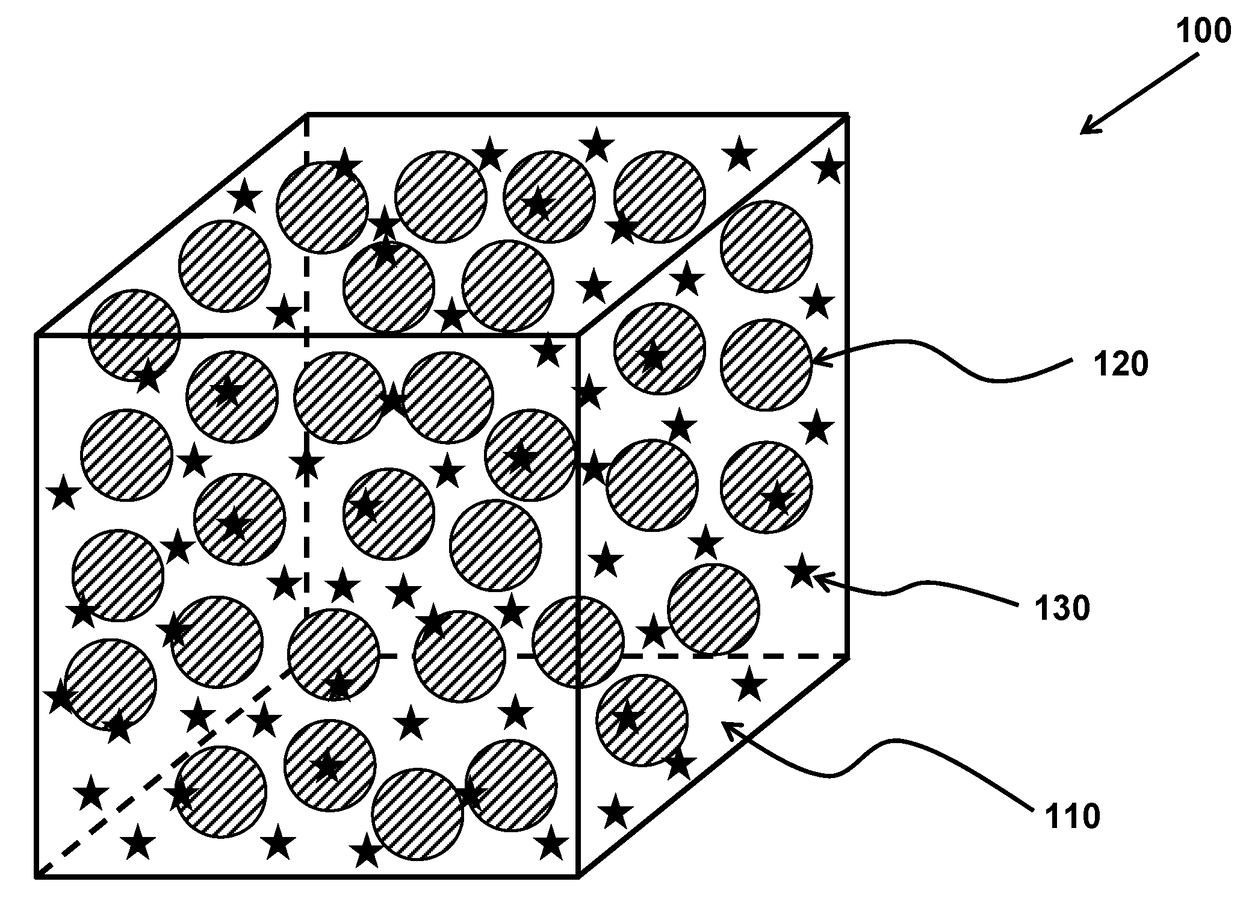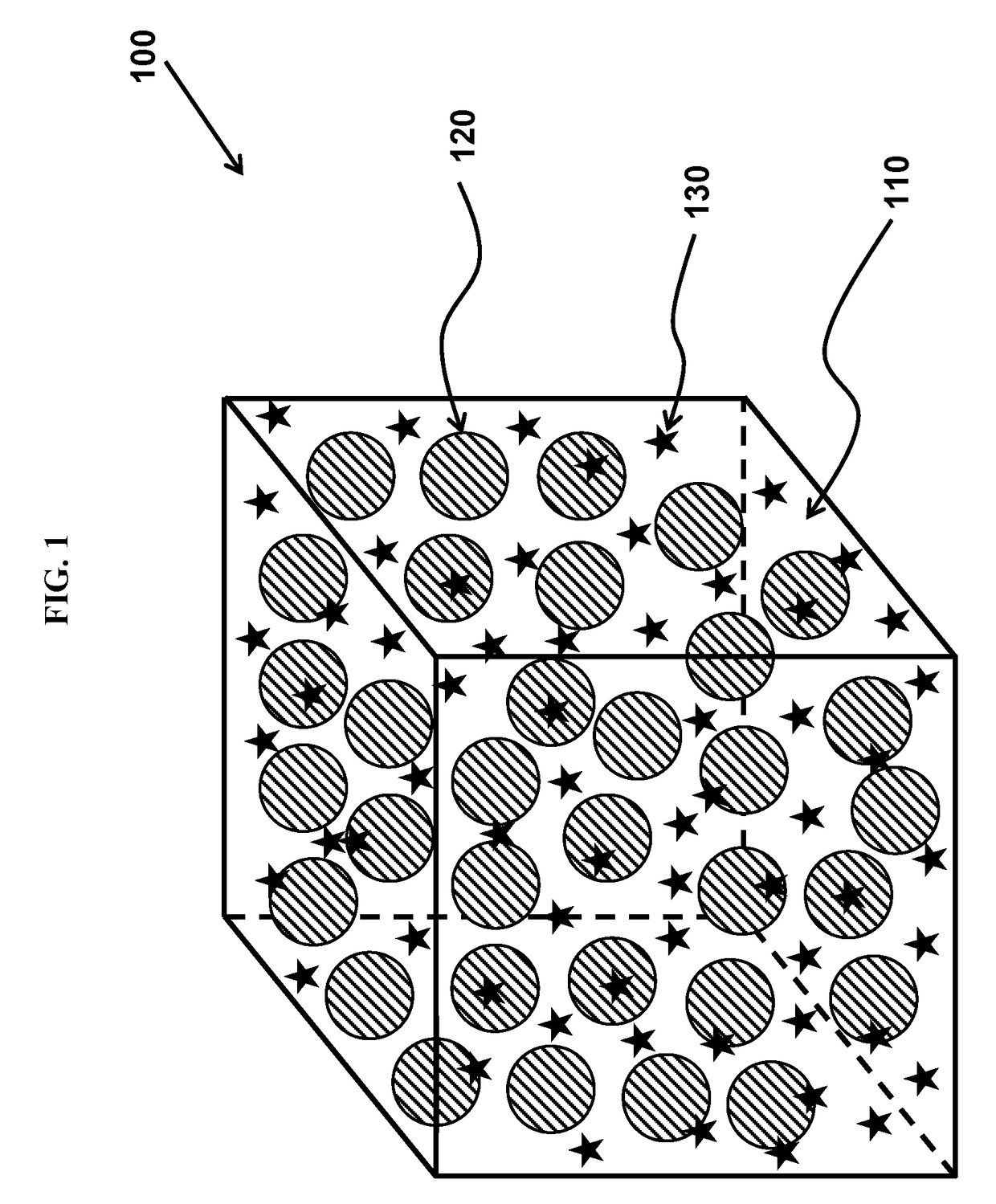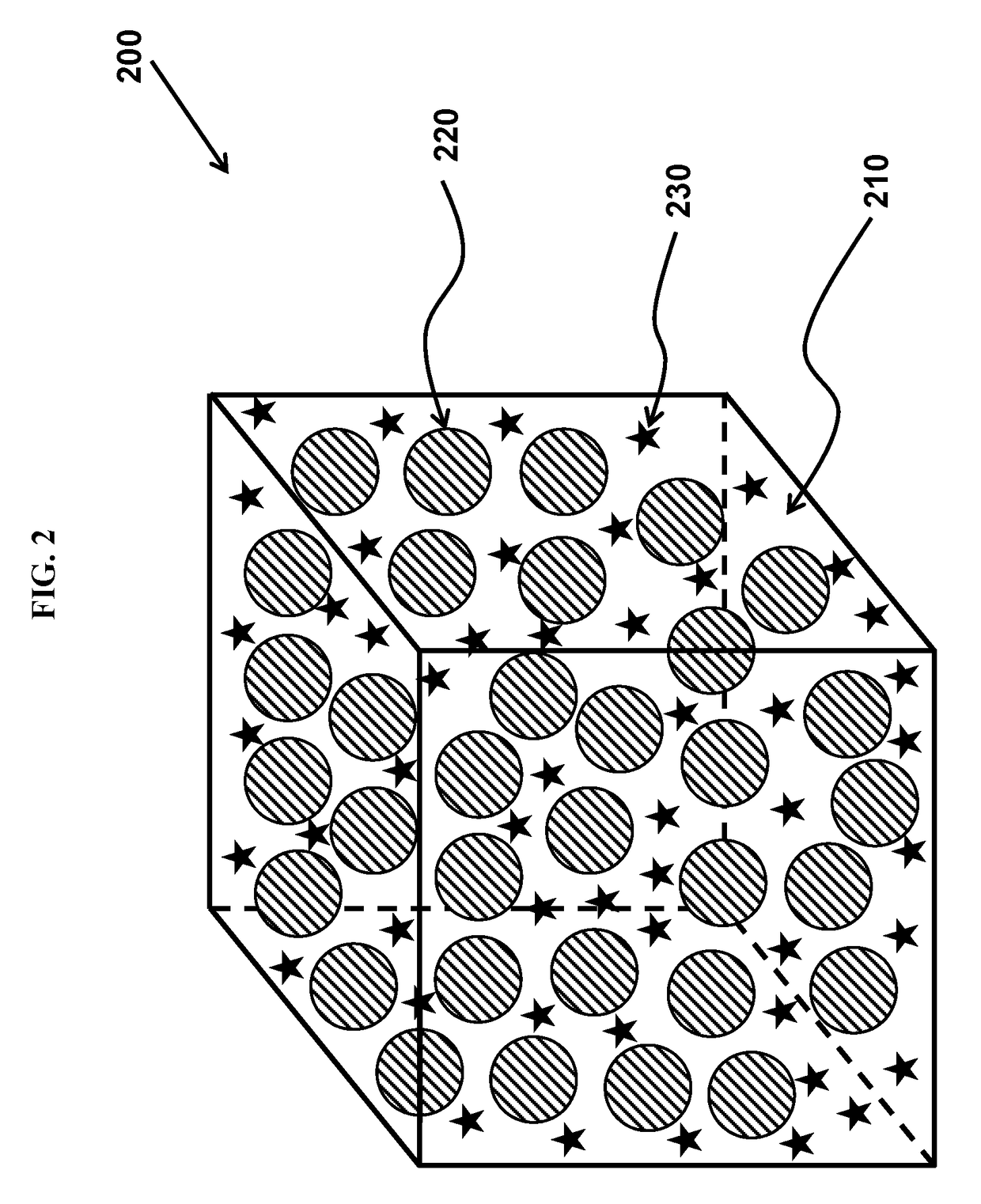Low-adhesion coatings with solid-state lubricants
a technology of solid-state lubricants and low-adhesion coatings, which is applied in the direction of coatings, lubricant compositions, base materials, etc., can solve the problems of increasing drag and thus fuel consumption, affecting vehicle fuel economy, aesthetics, and operator vision, and adding a large size and weight penalty
- Summary
- Abstract
- Description
- Claims
- Application Information
AI Technical Summary
Benefits of technology
Problems solved by technology
Method used
Image
Examples
example 1
Polymer without Solid-State Lubricant
[0176]4,4′-Methylenebis (cyclohexyl isocyanate) (HMDI), 1,1,1-tris(hydroxymethyl) propane (TMP), and dibutyltin dilaurate (DBTDL) are purchased from Sigma Aldrich. 5147X PFPE-ethoxylated diol is purchased from Solvay Specialty Polymers.
[0177]5147X PFPE-ethoxylated diol (4.5 mmoles, 10.8 g) and HMDI (22.5 mmoles, 5.895 g) are added into a 3-neck flask equipped with a mechanical stirrer. The reaction flask is placed in a 100° C. oil bath. The reaction is carried out under argon. 3.66 mg of DBTDL is added to the mix. The reaction mixture is stirred at 100° C. for 1 hour. The reaction flask is removed from the 100° C. oil bath, and allowed to cool down before adding THF (20 mL) and TMP (12 mmoles, 1.611 g) dissolved in MEK (10 mL). Films are cast as sheets or sprayed on aluminum coupons.
Example 2: Low-Adhesion Polymer with 15.7 Vol % MoS2
[0178]4,4′-Methylenebis (cyclohexyl isocyanate) (HMDI), 1,1,1-tris(hydroxymethyl) propane (TMP), dibutyltin dilau...
example 3
ion Polymer with 15.7 Vol % Graphite
[0180]4,4′-Methylenebis (cyclohexyl isocyanate) (HMDI), 1,1,1-tris(hydroxymethyl) propane (TMP), and dibutyltin dilaurate (DBTDL) are purchased from Sigma Aldrich. 5147X PFPE-ethoxylated diol is purchased from Solvay Specialty Polymers. CPREME G8 graphite is purchased from ConocoPhillips.
[0181]5147X PFPE-ethoxylated diol (3 mmoles, 7.2 g) and HMDI (15 mmoles, 3.93 g) are added into a 3-neck flask equipped with a mechanical stirrer. The reaction flask is placed in a 100° C. oil bath. The reaction is carried out under argon. 2.5 mg of DBTDL is added to the mix. The reaction mixture is stirred at 100° C. for 1 hour. The reaction flask is removed from the 100° C. oil bath, and allowed to cool down before adding THF (15 mL) and TMP (8 mmoles, 1.074 g) dissolved in MEK (7 mL). 3.1 g of graphite is added to the prepolymer and mixed well on a FlackTek SpeedMixer. Films are cast as sheets or sprayed on aluminum coupons.
example 4
ion Polymer with 30 Vol % Graphite
[0182]4,4′-Methylenebis (cyclohexyl isocyanate) (HMDI), 1,1,1-tris(hydroxymethyl) propane (TMP), and dibutyltin dilaurate (DBTDL) are purchased from Sigma Aldrich. 5147X PFPE-ethoxylated diol is purchased from Solvay Specialty Polymers. CPREME G8 graphite is purchased from ConocoPhillips.
[0183]5147X PFPE-ethoxylated diol (3 mmoles, 7.2 g) and HMDI (15 mmoles, 3.93 g) are added into a 3-neck flask equipped with a mechanical stirrer. The reaction flask is placed in a 100° C. oil bath. The reaction is carried out under argon. 2.5 mg of DBTDL is added to the mix. The reaction mixture is stirred at 100° C. for 1 hour. The reaction flask is removed from the 100° C. oil bath, and allowed to cool down before adding THF (15 mL) and TMP (8 mmoles, 1.074 g) dissolved in MEK (7 mL). 6 g of graphite is added to the prepolymer and mixed well on a FlackTek SpeedMixer. Films are cast as sheets or sprayed on aluminum coupons.
PUM
| Property | Measurement | Unit |
|---|---|---|
| particle size | aaaaa | aaaaa |
| surface energy | aaaaa | aaaaa |
| humidity | aaaaa | aaaaa |
Abstract
Description
Claims
Application Information
 Login to view more
Login to view more - R&D Engineer
- R&D Manager
- IP Professional
- Industry Leading Data Capabilities
- Powerful AI technology
- Patent DNA Extraction
Browse by: Latest US Patents, China's latest patents, Technical Efficacy Thesaurus, Application Domain, Technology Topic.
© 2024 PatSnap. All rights reserved.Legal|Privacy policy|Modern Slavery Act Transparency Statement|Sitemap



